“Sound isn’t just what you hear. It’s where you are.”
If you’ve ever sat in a cinema and felt like a car zoomed past your shoulder or a spaceship rumbled directly overhead, that wasn’t just volume — it was direction. That’s what surround sound does. And thanks to modern audio tech, you can bring that same immersive audio experience home — not just to your living room, but directly to your ears.
In this guide, we’ll explore what 7.1 surround sound really means, how it works in headsets, what makes a good 7.1 headset stand out, and whether it’s worth it for gaming, movies, or both. We’ll also break down the difference between true and virtual 7.1, and recommend some of the best 7.1 surround sound gaming headsets available in 2025.
What Does 7.1 Surround Sound Actually Mean?

Let’s start with the basics. When people hear “7.1,” they often think it’s just marketing speak. But there’s a reason those numbers matter.
- The “7” refers to seven discrete audio channels — front left, front right, center, rear left, rear right, and two side channels.
- The “.1” refers to a subwoofer channel, which handles low-frequency sounds like rumbling thunder or deep bass explosions.
Originally designed for home theater systems, 7.1 surround sound creates a dome of audio around the listener. It’s not just about hearing the sound — it’s about placing it. A creaking door behind you? Footsteps to your right? Gunfire in the distance ahead? With 7.1 surround, your ears know exactly where to turn.
7.1 vs 5.1 Surround Sound – What’s the Real Difference?
So why go for 7.1 instead of 5.1?
5.1 surround is the older, more common standard. It uses six channels: left, right, center, two rear surrounds, and a subwoofer. It’s great — but 7.1 adds more detail to your side and rear soundstage, giving you two extra channels that fill in the gaps.
In practice, that means:
- More spatial awareness in gaming
- A fuller, more cinematic experience in movies
- Better localization of effects in high-paced scenes
If you’re gaming competitively or watching content that supports 7.1 formats like Dolby TrueHD or DTS-HD Master Audio, the difference is easy to hear.
As one user on Reddit put it: “I didn’t just hear the explosion — I felt like I ducked under it.”
True vs Virtual 7.1 Surround Sound in Headphones
Here’s where things get interesting — and sometimes confusing.
Most 7.1 surround sound headsets aren’t packing eight physical speakers inside your earcups. Instead, they simulate the effect using software algorithms and signal processing.
There are two types of 7.1 surround sound in headsets:
1. True 7.1 Surround Sound Headphones
These headsets use multiple drivers in each earcup, each dedicated to a different audio channel. You’ll usually find:
- A front driver
- A rear driver
- A center channel driver
- A subwoofer or bass driver
While rare and often more expensive, they offer a physically accurate surround sound experience — essentially miniaturized home theater systems on your head.
Example:
- Razer Tiamat 7.1 V2 Surround Sound Gaming Headset with Dual Subwoofers
2. Virtual 7.1 Surround Sound Headsets
These use only two drivers (one per ear), and the 7.1 effect is created using audio processing software. Think of it as acoustic trickery — convincing your brain that sound is coming from specific directions based on phase shifts, delays, and EQ curves.
Popular tech includes:
- Dolby Headphone
- DTS Headphone:X
- Razer Synapse 7.1 Engine
- Corsair iCUE with Dolby 7.1
Virtual 7.1 is far more common — and surprisingly effective. For gamers especially, virtual setups often strike the perfect balance between performance, price, and practicality.
Is 7.1 Surround Sound Good for Gaming?

In a word: yes.
Why Gamers Love It:
- Directional Awareness: Hear enemies before you see them — literally.
- Environmental Depth: From the clink of a shell casing behind you to echoing footsteps in a stairwell.
- Competitive Edge: In games like Call of Duty, CS:GO, Valorant, or Rainbow Six Siege, knowing where the sound is coming from can mean the difference between victory and a respawn screen.
Bonus for Immersion:
Even in non-competitive titles like The Last of Us, Cyberpunk 2077, or Elden Ring, 7.1 surround adds atmosphere. Rain sounds richer. Fire crackles around you. Music surrounds instead of sitting in the background.
And with platforms like the PlayStation 5 Tempest 3D Audio or Xbox Spatial Sound, support for immersive audio is now baked into the consoles themselves.
Popular Models of 7.1 Surround Sound Gaming Headsets in 2025
Choosing a gaming headset today isn’t as simple as picking the most expensive option or the one with the most flashy lights. If you’re interested in true immersion, particularly in competitive games or cinematic single-player titles, then the best 7.1 surround sound gaming headset is what you’re looking for.
Let’s go beyond just naming models. We’ll explore how specific headsets deliver on the promise of surround sound, what makes them stand out, and why gamers continue to trust them.
1. The Razer BlackShark V2 X Gaming Headset: 7.1 Surround Sound Made for Esports
Razer has long been a trusted name in gaming peripherals, and the Razer BlackShark V2 X gaming headset with 7.1 surround sound is one of the company’s most refined creations. Unlike generic stereo headsets, this model uses custom-tuned 50mm drivers and virtual surround sound processing to simulate directional audio. And the difference isn’t subtle.
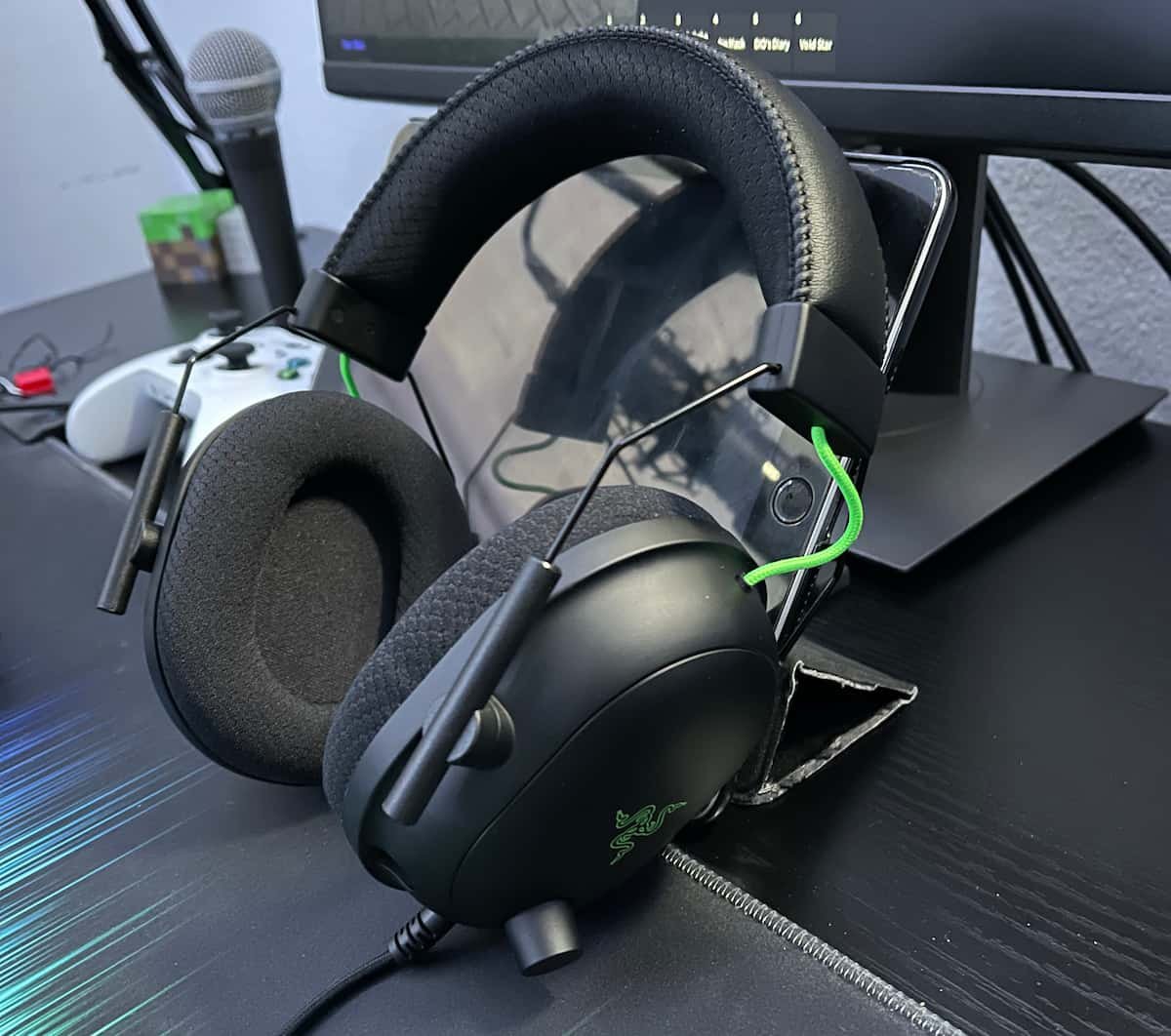
When you’re in a high-pressure match, being able to distinguish between footsteps coming from behind you versus the ones echoing in the next room is critical. The BlackShark V2 X delivers that spatial clarity exceptionally well — especially considering its mid-range price point. It’s lightweight, durable, and optimized for competitive accuracy. This makes it an ideal starting point for players wanting to experience 7.1 virtual surround sound headphones without investing hundreds of dollars.
2. Logitech G432: A Trusted Wired Headset with 7.1 DTS Surround
Another standout is the Logitech G432 7.1 surround sound wired gaming headset. This model doesn’t just boast big drivers or fancy logos — it integrates DTS Headphone:X 2.0 surround processing. That’s significant. DTS:X is often compared directly with Dolby Atmos, and while it might not offer true 3D object-based rendering, it delivers exceptional positional sound in a 7.1 virtual environment.
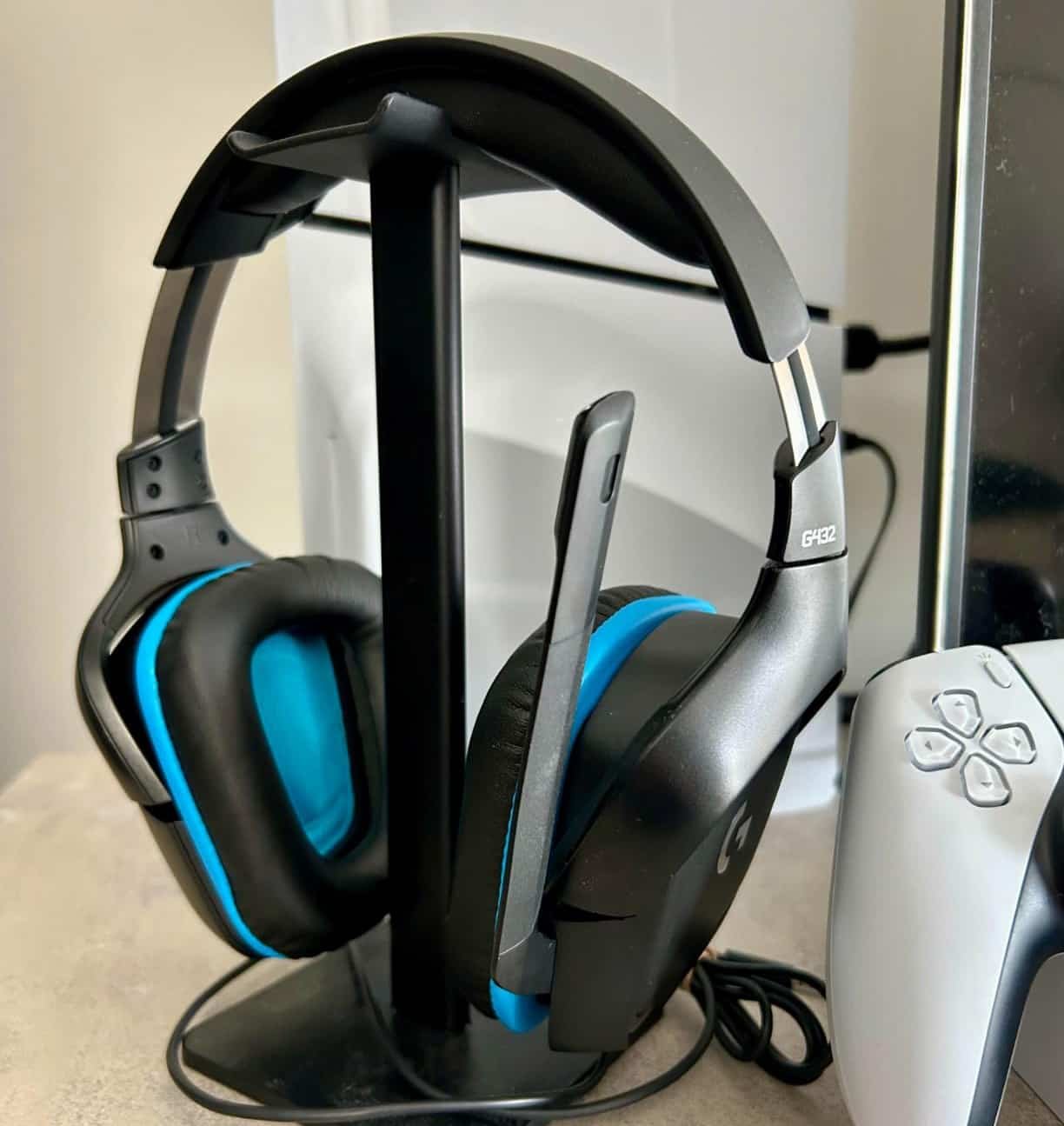
Plugging this headset into your PC and running a surround sound test, you’ll notice that sound cues don’t just come from left or right — they move. A grenade might echo from behind, and a teammate’s voice can be pinned to a direction, not just a vague space. For a gaming headset 7.1 surround sound PC users can trust, the G432 has become a staple recommendation, especially for those who want wired reliability and USB simplicity.
3. HyperX Cloud II – Consistency, Comfort, and Virtual 7.1
It’s impossible to talk about 7.1 surround sound headphones for gaming without mentioning the HyperX Cloud II. This headset has earned legendary status for a reason. First released years ago, it has remained a fan favorite thanks to its rich sound profile, outstanding build quality, and 7.1 virtual surround capabilities delivered through an inline USB sound card.
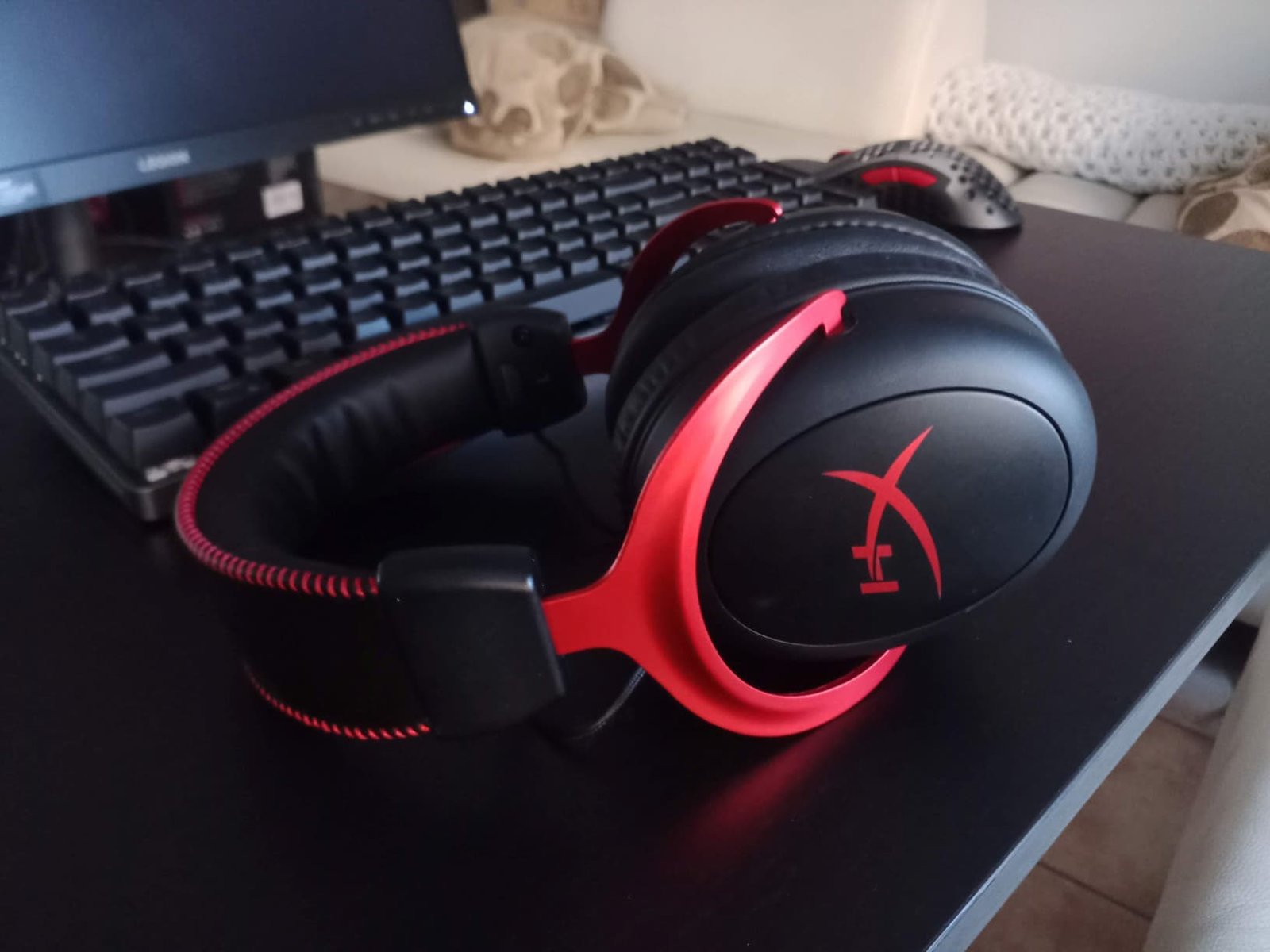
What makes the Cloud II especially attractive is its consistency. Whether you’re playing competitive shooters or narrative-driven adventures, the sound is always clear, always layered. The virtual surround processing works particularly well on PC, and while console support is more limited, the headset is still widely used with Xbox One 7.1 surround sound headset configurations via third-party adapters.
4. Corsair Void RGB Elite Wireless – Premium Build with 7.1 Support
Wireless gaming headsets have come a long way, and Corsair’s Void RGB Elite Wireless Premium Gaming Headset with 7.1 Surround Sound is one of the most refined examples. Combining comfort, style, and reliable 2.4GHz wireless transmission, this headset uses Corsair iCUE software to activate Dolby 7.1 surround sound processing on PC.

What sets it apart is the feeling of openness. Even though it’s closed-back, the soundstage feels wide. Explosions sound deeper, and environmental sounds fill the space around you instead of being flattened into the left-right axis. For players seeking freedom from cables while still enjoying detailed 7.1 surround sound gaming headset PC performance, this is a worthy contender.
The Void RGB Elite also comes in multiple finishes, including the popular carbon and white editions, which makes it a common search term: Void RGB Elite Wireless Premium Gaming Headset with 7.1 Surround Sound — Carbon.
How 7.1 Surround Sound Works in Headphones
There’s a common question that comes up: how does 7.1 surround sound work in headphones when you only have two ears and, typically, two speaker drivers? It sounds impossible at first — but it’s all about perception.

When a headset advertises virtual 7.1 surround, it’s using software algorithms to manipulate phase, delay, and volume levels to make sounds seem like they’re coming from multiple directions. Essentially, the headset is tricking your brain — and your ears are more than willing to believe it.
True 7.1 surround sound headphones sometimes attempt to recreate this effect with multiple physical drivers inside each earcup. Models like the Razer Tiamat 7.1 V2 Surround Sound Gaming Headset with Dual Subwoofers or the Patriot Viper V360 7.1 Virtual Surround Sound Headset offer designs that house up to five drivers per cup. In theory, this allows each channel (front, center, rear, etc.) to have its own sound source.
However, in practice, many gamers prefer well-tuned virtual systems over cramped multi-driver ones. Virtual 7.1 headsets are lighter, more comfortable, and often more consistent across different content. As one reviewer noted, “With a good virtual engine, I don’t need ten drivers. I just need good software and clear drivers.”
Platform Support and Compatibility: PC, PS5, and Xbox
Not all surround sound headsets work the same across platforms. If you’re searching for the best gaming headset 7.1 surround sound PC, you’ll find many more options than on consoles. That’s because PCs offer better driver support, more software customization (like iCUE or Synapse), and direct access to surround processing like Windows Sonic, Dolby Atmos for Headphones, and DTS:X.

On PS5, the audio engine is based on Tempest 3D AudioTech, which doesn’t use traditional 7.1 channels but still allows 7.1 compatible headsets to simulate spatial audio. Models like the Corsair – Void RGB Elite Wireless 7.1 Surround Sound Gaming Headset for PC, PS5, PS4 – White are fully supported.
The Xbox One 7.1 surround sound headset experience relies on whether the game and system support Dolby Atmos or Windows Sonic. Some models, like the Razer Nari Ultimate Wireless 7.1 Surround Sound Gaming Headset, are certified for both and work well across platforms.
When choosing your headset, always double-check:
- Does the surround sound engine support your console?
- Is the surround sound processing done in software, on PC, or in hardware?
- Can the headset switch between platforms (USB, 3.5mm, wireless dongle)?
Cross-platform models like the SteelSeries Arctis Nova 7, Razer Kraken Tournament Edition THX 7.1, and HyperX Cloud Stinger Core Wireless Gaming Headset, 7.1 Surround Sound for PC offer excellent flexibility.
True vs Virtual 7.1 Surround Sound Headphones: What’s the Real Difference?
The audio world often throws around terms like “true 7.1” and “virtual 7.1,” but what do they actually mean — and does it really matter?
Let’s break it down.
True 7.1 Surround Sound Headphones
These headphones aim to replicate the structure of a traditional 7.1 speaker setup. That means they house multiple drivers in each earcup, with each one dedicated to a specific channel — front left, rear right, center, and so on.
In theory, this creates true directional audio, with actual separation between sounds depending on their source. For example, the Razer Tiamat 7.1 V2 features five drivers per earcup, allowing for dedicated sound output across all channels, even dual subwoofers. This is about as close as headphones can get to physical 7.1 setups in home theaters.
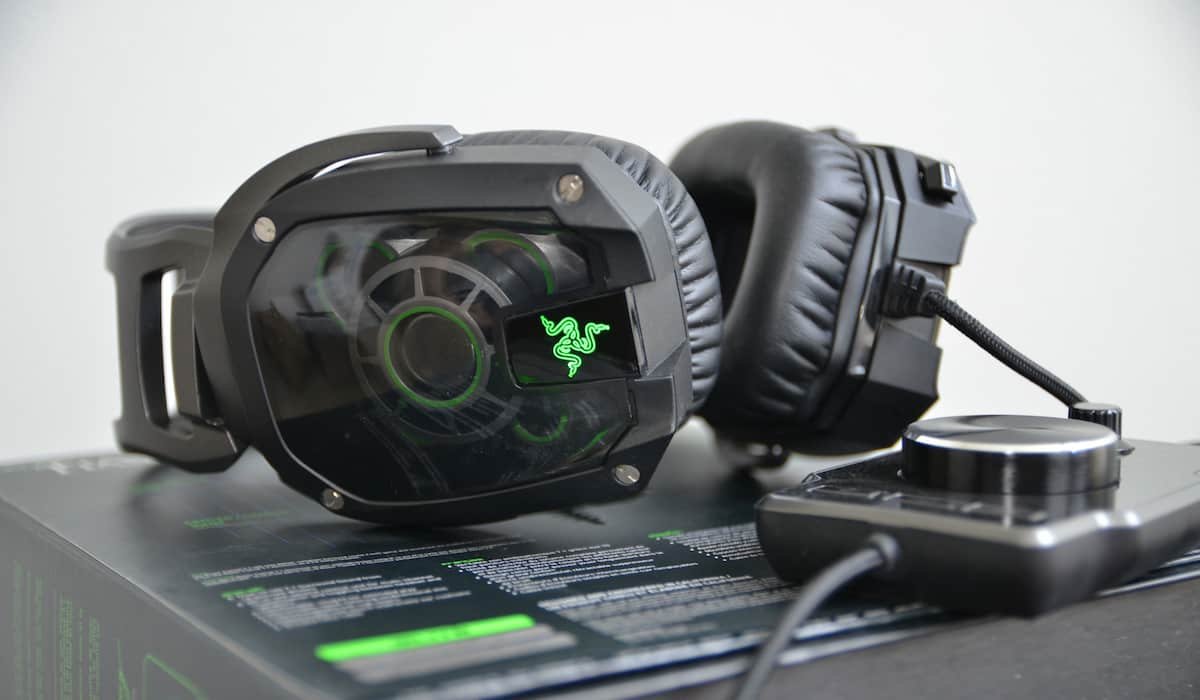
But there’s a tradeoff. More drivers mean larger, heavier earcups. The tuning also becomes more complex — and if the drivers aren’t precisely balanced, you might end up with muddy or uneven sound.
So while true 7.1 headphones are technically impressive, they’re not always better than virtual options.
Virtual 7.1 Surround Sound Headphones
Virtual 7.1 headphones, by contrast, use digital signal processing (DSP) to simulate the effect of surround sound using just two physical drivers (one in each ear). They rely on software — like Dolby Headphone, DTS Headphone:X, or brand-specific engines — to create delays, reflections, and spatial cues that trick your brain into thinking sound is coming from multiple directions.
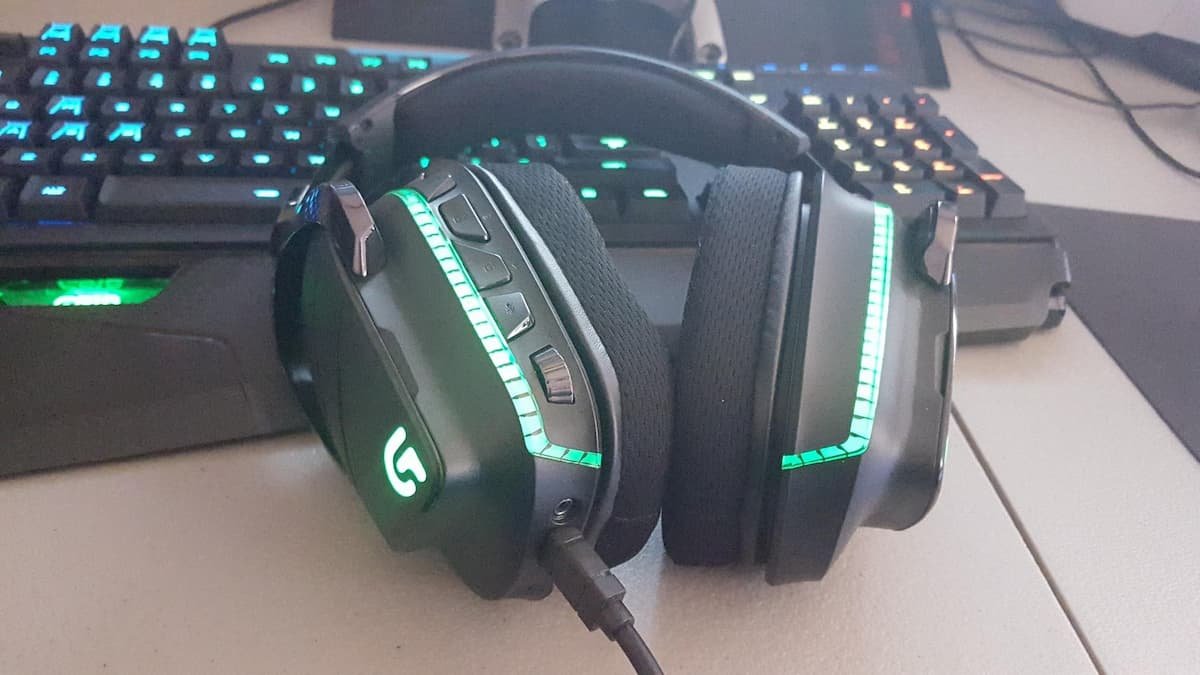
In gaming, the effect can be incredibly convincing. Good virtual 7.1 systems are lighter, cheaper, and easier to tune than true 7.1 models. That’s why most 7.1 surround sound gaming headsets on the market today — including Logitech G933 Artemis Spectrum, Corsair HS70 Pro, and Razer Kraken X — are based on virtual systems.
The key is the quality of the software. A well-tuned virtual engine will outperform a poorly implemented true 7.1 headset every time.
So what’s better?
For most users, virtual 7.1 surround sound headphones are the smarter choice. They offer nearly the same immersion, with less bulk and a lower price.
7.1 Surround Sound Headphones – Wired or Wireless?
Another important decision when choosing a headset is whether to go wired or wireless. Both have their advantages, especially when 7.1 surround sound is involved.
Wired 7.1 Surround Sound Headsets
Wired headsets tend to offer lower latency and more consistent sound quality, especially for competitive gaming. They don’t depend on battery life, and they usually provide plug-and-play functionality via USB.
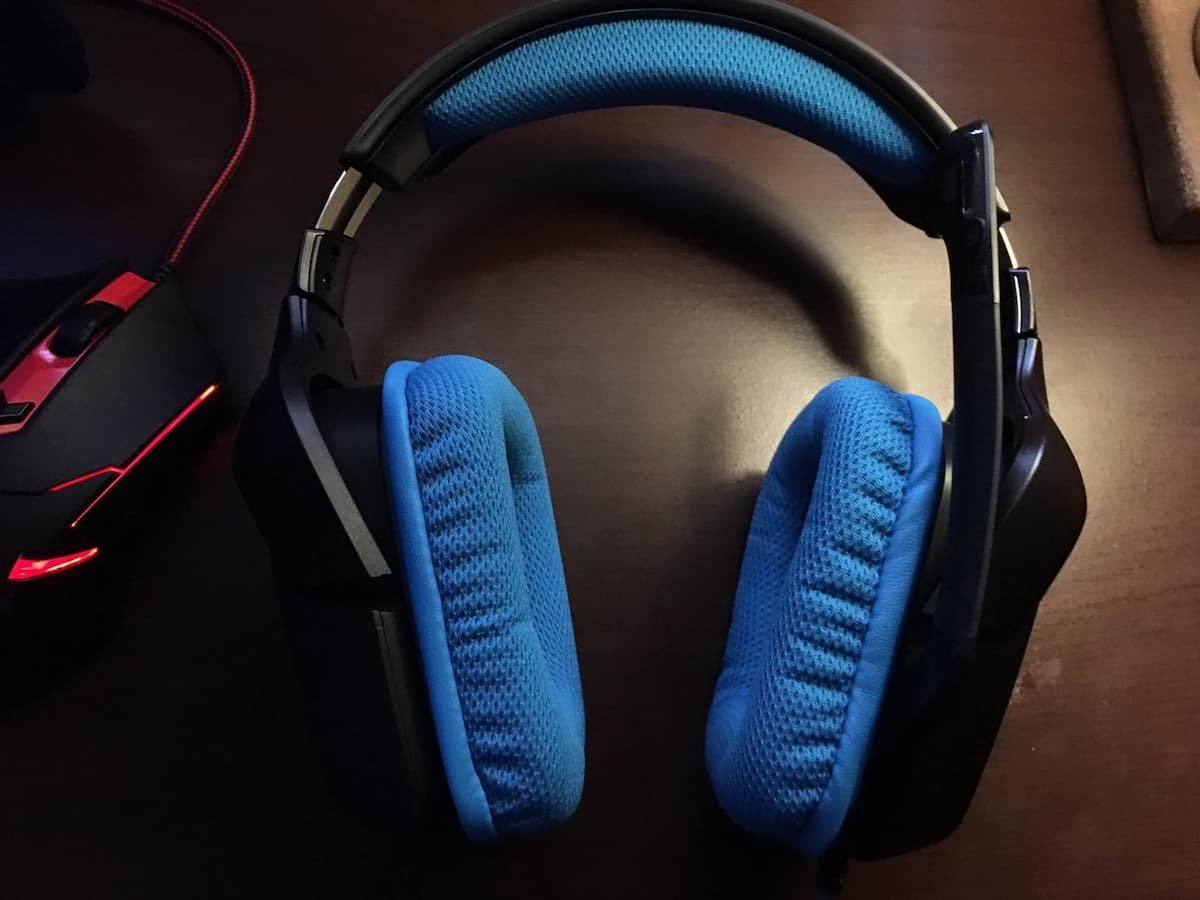
Models like the Logitech G430 DTS Headphone: X and Dolby 7.1 Surround Sound Gaming Headset, Corsair Void Pro Surround, or Razer Kraken Tournament Edition are great examples of wired headsets with 7.1 surround sound capabilities.
They’re often preferred for PC gaming because they can leverage advanced drivers and processing software without bandwidth limitations.
Wireless 7.1 Surround Sound Headsets
Wireless models bring a different kind of freedom. With today’s tech, wireless no longer means sacrificing audio quality — at least not always. Headsets like the SteelSeries Arctis Nova 5X Wireless, Razer Nari Ultimate, and Corsair HS70 Pro Wireless Gaming Headset – 7.1 Surround Sound Headphones for PC deliver immersive sound without the hassle of cables.
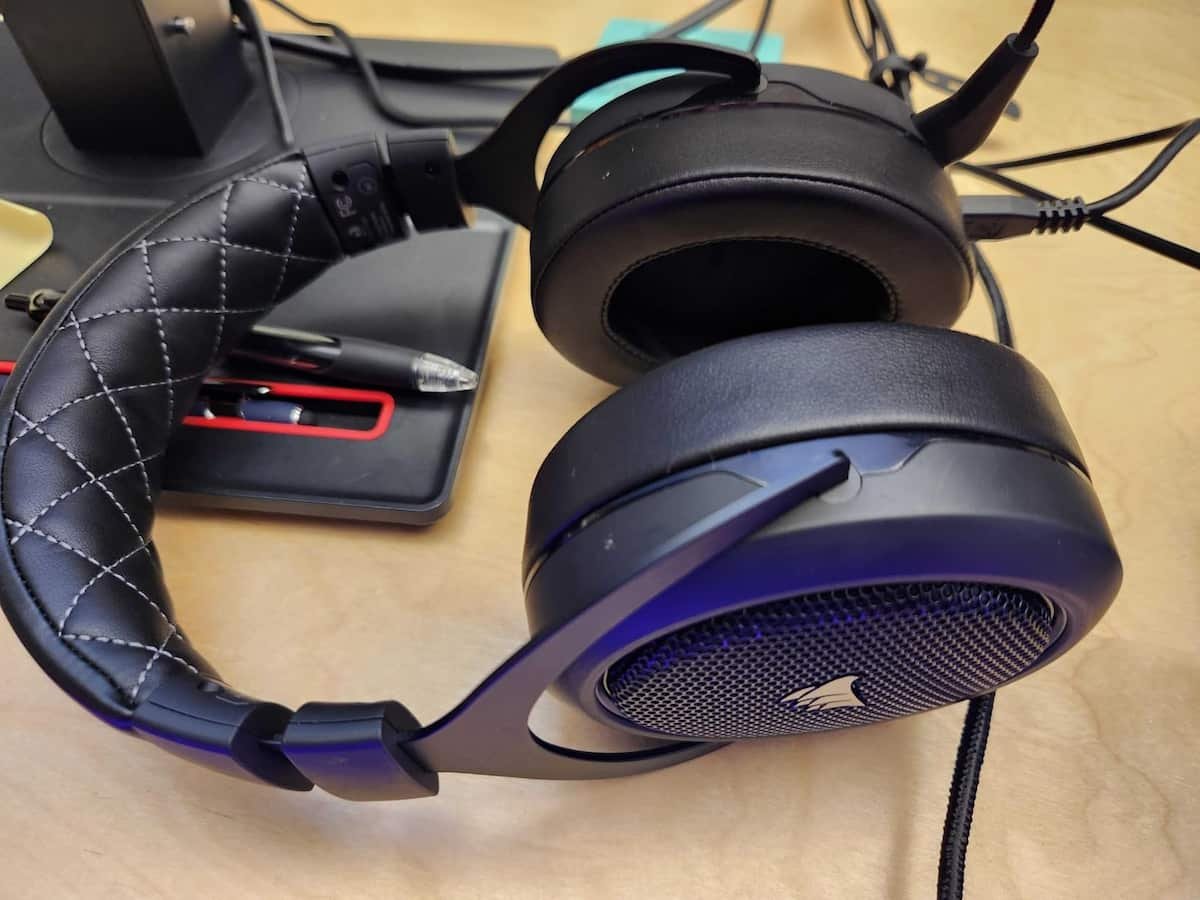
These headsets usually come with a 2.4 GHz USB dongle for stable, low-latency performance. Some also support Bluetooth, allowing dual-mode connections with phones, tablets, and even TVs.
However, wireless systems can be more expensive, and you’ll need to manage charging cycles — some models offer up to 40–60 hours of battery life, but others may require daily charging depending on use.
For console gamers, wireless 7.1 headsets are especially convenient. If you’re searching for PS5 7.1 surround sound headset or headphones 7.1 surround sound Xbox One, wireless models with platform compatibility will give you the best experience.
How to Test 7.1 Surround Sound Headphones Properly
One common frustration among buyers is not knowing whether their 7.1 surround sound headset is actually working. Testing is essential — and luckily, it’s simple.
1. Use a Proper Surround Test Track
You can find official 7.1 surround sound test headset videos on YouTube. Look for tests labeled “7.1 surround speaker test” or “headphone channel test.” These clips send sound around the virtual environment, helping you confirm that each channel — front, rear, side, center — is working correctly.
During playback, close your eyes and pay attention. You should clearly hear audio circling around your head. If everything sounds flat or directional movement feels weak, double-check that 7.1 is enabled in your audio settings.
2. Use Built-in Software Tools
Most manufacturers bundle testing tools inside their drivers:
- Razer Synapse 7.1 Surround Sound includes a built-in demo track.
- Corsair iCUE lets you activate and preview Dolby 7.1 surround sound headphones.
- SteelSeries GG Sonar gives fine control over each channel and virtual space.
- Logitech G Hub can run calibration tones and simulate spatial audio environments.
Make sure your headset is properly selected as the default output device, and that 7.1 mode is activated, not stereo.
3. Try It In-Game
The best test, ultimately, is in action. Games like Apex Legends, Escape From Tarkov, Call of Duty Warzone, and Horizon Forbidden West offer rich positional audio. If you can track footsteps or pinpoint gunfire direction, your 7.1 surround is working.
And don’t forget: 7.1 surround sound test headphones gaming scenarios are different from movies. The movement is faster, and the sounds are more dynamic. That’s why calibration matters.
Can 7.1 Surround Sound Headphones Be Used for Movies or TV?
Definitely — and in many cases, they can outperform even soundbars or TV speakers.
Content on platforms like Netflix, Apple TV, Disney+, and Amazon Prime Video often supports Dolby Atmos, 5.1, or 7.1 mixes. Using surround sound headphones lets you experience that layered, cinematic soundstage — even if you’re watching in a dorm room or on a laptop.

Some models like the Sony MDR-DS6500 Wireless 7.1 Surround Sound Headphones or Bose 7.1 Surround Sound Headphones are designed specifically for movies and home theater use. They deliver wide frequency response, rich bass, and comfortable wear for long binge sessions.
If your main interest is streaming and cinema audio, look for models with:
- Support for Dolby Audio or DTS:X
- Long wireless range
- High-end DACs and wide driver response
- Good passive or active noise isolation
You don’t need a full speaker system to get movie-theater immersion anymore. A well-designed 7.1 surround sound wireless headphones setup can deliver it all.
Stereo vs 5.1 vs 7.1 Surround Sound Headphones: Understanding the Progression
For many users, the idea of upgrading from basic stereo headphones to a full surround sound setup raises a simple question: is it really worth it?
To answer that, it helps to understand what each audio configuration is actually doing — and what you’re gaining as you move from stereo to 5.1, and finally to 7.1.
Stereo Headphones: The Starting Point
Most standard headphones and even gaming headsets operate in stereo mode. This means there are only two audio channels — left and right. While stereo can provide decent imaging (the sense that a sound is on one side or the other), it lacks depth, height, and rear positioning.
In games or movies, this often leads to a flat experience. You might hear that something is to your left, but you won’t know if it’s behind you, above, or moving.
Still, stereo headphones are not useless. Some are very well tuned, especially for music, and they’re often cheaper. But for immersion and competitive awareness, they’re limited.
5.1 Surround Sound Headsets: The Middle Ground
With 5.1 surround sound headsets, audio is split across six channels — front left, front right, center, rear left, rear right, and one subwoofer channel. This adds dimension, allowing for rear and center sound cues, which are critical for cinematic sound design and fast-paced gaming.
However, 5.1 is still largely horizontal. You’ll get more cues than stereo, but the sense of full environmental space — especially vertical — is not complete.
7.1 Surround Sound: Full Positional Awareness
When you move up to 7.1 surround sound headphones, you’re adding two additional rear surround channels. This significantly improves the accuracy of sound placement, especially in large environments like open-world games or high-action movies.
It’s the extra spacing — the extra channels — that help you feel like you’re inside a space, not just listening to it. And when paired with formats like THX Spatial Audio, Dolby Headphone, or DTS Headphone:X, the experience becomes almost cinematic.
As Razer describes their Razer Kraken Tournament Edition THX 7.1 Surround Sound Gaming Headset, this spatial technology creates a soundscape that “extends beyond the left and right of traditional surround, allowing for full 360-degree sound.”
Other Noteworthy 7.1 Headsets and Accessories
While the mainstream headsets get a lot of attention, several other products contribute to the wider 7.1 ecosystem — especially for PC gamers looking for USB plug-and-play options, or budget-conscious users wanting 7.1 surround sound headphones under $2000 or even under $100.
Affordable Models
- Razer Kraken X Ultralight Gaming Headset: 7.1 Surround Sound – Lightweight, budget-friendly, and uses Razer’s virtual engine for spatial awareness. Ideal for beginners or younger gamers.
- Mpow EG3 Gaming Headset, 7.1 Surround Sound Gaming Headphones – A low-cost model with surprisingly decent spatial simulation for casual players.
- SADES Zelda GO4Zelda 50mm Super Bass 7.1 Surround Sound USB PC Gaming Headset – Popular among streamers looking for value-driven USB models with built-in mics and vibration feedback.
High-End or Specialized Devices
- Corsair ST100 RGB Premium Headset Stand with 7.1 Surround Sound – Not just a stand. This accessory includes an integrated DAC and virtual 7.1 surround processor, effectively turning any stereo headset into a surround-capable device.
- HP OMEN Mindframe Wired 7.1 Virtual Surround Sound Gaming Headset – Known for its cooling earcup technology and immersive positional audio, often paired with HP gaming setups.
- Sony 7.1 Surround Sound Headphones, including MDR-DS6500 – Targeted more toward cinema and wireless use with TVs and Blu-ray players, these deliver broad support for Dolby and DTS formats.
These lesser-known products are part of why search terms like USB 7.1 surround sound headphones PC, Bluetooth 7.1 surround sound headphones, and digital 7.1 surround sound headset continue to grow in popularity.
How to Choose the Best 7.1 Surround Sound Headphones in 2025

With so many models, formats, and brands available, what should you actually look for when making a purchase?
Here are a few final, serious recommendations based on real-world performance:
1. Compatibility Comes First
Before getting attached to a headset, make sure it works with your platform. Not all headsets support Xbox One, PS5, PC, and mobile equally. Some rely on proprietary software (like Razer Synapse), which might not run on consoles. Always check for official certification.
Search phrases like headphones 7.1 surround sound Xbox One or 7.1 surround sound gaming headset PC often lead users to headsets that support USB audio on consoles or provide adapter-based solutions.
2. Prioritize Comfort and Build
If you’re gaming or streaming for hours, comfort becomes a necessity. Look for lightweight builds, breathable earcups, and adjustable headbands. Models like the SteelSeries Arctis line or Corsair HS series consistently rank high in this category.
Also, avoid marketing distractions. Just because a product has RGB lighting doesn’t mean the drivers are tuned well. A 7.1 surround sound gaming headset RGB might look cool, but that doesn’t guarantee clean midrange response or crisp footsteps in competitive shooters.
3. Virtual vs True — Choose Based on Use Case
If you’re aiming for competitive gaming and fast-paced reaction time, a good virtual 7.1 headset with advanced software is often better than a bulky true 7.1 model. But for immersive, stationary home theater setups, true 7.1 surround sound headphones like the Razer Tiamat 7.1 V2 or Logitech G35 may offer an edge in cinematic fidelity.
4. Don’t Ignore the Mic
While not the main focus, a headset’s microphone can’t be overlooked — especially for online gaming, streaming, or meetings. Many 7.1 headsets for PC gaming include noise-canceling mics with adjustable monitoring. Options like the Logitech G933, Corsair Void Pro, or Razer Nari Ultimate combine clear audio with comfortable mic positioning.
Final Thoughts: Is 7.1 Surround Sound Still Relevant in 2025?
Absolutely. While the industry buzz today is all about “spatial audio,” “3D sound,” and “object-based rendering,” the foundation of immersive audio is still rooted in channel-based surround formats — especially for headphones.
7.1 surround sound headsets remain one of the most accessible and effective ways to experience that immersion without building an entire home theater system. Whether you’re gaming, watching high-action films, or listening to ambient music that moves across your headspace, a properly tuned 7.1 headset makes a world of difference.
And the good news? There’s something for everyone:
- For entry-level gamers: Razer Kraken X, Mpow EG3, Corsair HS55
- For serious players: Razer BlackShark V2 X, Logitech G432, HyperX Cloud II
- For wireless comfort seekers: Corsair HS70 Pro, SteelSeries Arctis Nova 7X
- For cinematic audio lovers: Sony MDR-DS6500, Bose 7.1 Surround Headphones
Choosing the best 7.1 surround sound headset isn’t just about specs — it’s about how you want to feel inside your game or movie. It’s about hearing the story the way it was meant to be heard.
And in that space between silence and sound, 7.1 still delivers.